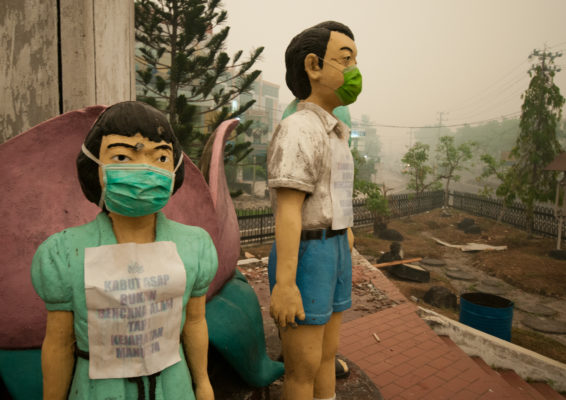“Indonesia is eager to share our invaluable experience with our fellow countries, the two Congos, in managing peatlands with appropriate, sustainable practices,” said Siti Nurbaya Bakar, Indonesia’s minister of environment and forestry. The country aims to share lessons learned, assist and collaborate with other developing countries with the support of UN Environment.
In 2009, Indonesia made a promise to reduce national greenhouse gas emissions by at least 26 percent by 2020. In its 2015 Intended Nationally Determined Contribution, Indonesia increased its voluntarily promise to reduce greenhouse gas emissions to 29 percent on its own and up to 41 percent with international support by 2030, against a business as usual scenario.
Tim Christophersen, head of the water, land and climate branch of UN Environment, which helped establish the ITPC, said that Indonesia is now on its way to correcting past mistakes made in peatland management.
“Siti Nurbaya is a champion for this cause,” Christophersen said. Through sharing lessons with other tropical countries, peatland management will improve, offering potential livelihood benefits in addition to environmental advantages, he said.
PEATLAND PATHWAYS
Peatland drainage leads to land subsidence, and makes them more vulnerable to fires, which can rapidly burn for years underground in optimal conditions. In 2015, in Indonesia, fires burned uncontrollably for lengthy periods due to dry conditions.
Peat fires and haze in Indonesia that same year killed 100,000 people, put half a million people in hospital, and caused up to $40 billion in damage, said Hans Joosten, a world leader in peatlands management with the International Mire Conservation Group and Germany’s University of Greifswald.
Statues in Kalimantan encourage the public to wear a mask to protect themselves from toxic fire haze
CIFOR
Fire fighter battles the devastating Kalimantan forest fires, 2015
CIFOR
“We must appreciate very much that Indonesia has taken the lead in turning this back – it’s leading the list of global top emitters from peatlands, even without the enormous peatland fires,” Joosten said. “But the European Union is a good second — the European Union likes to blame Indonesia for peatland emissions, but should also look at their own.”
Developed countries must share in the responsibility, Joosten said. “If we look at land use, peatlands produce 30 percent of all emissions from all agriculture.”
Land subsidence caused by draining poses a challenge, he said. Much of the Netherlands is now at risk of flooding because it is below sea level — in some areas the land has sunk 8 meters.
“We’ve calculated that peatlands subsidence will, in this century, lead to uncontrolled flooding of 10 to 20 million hectares of productive land worldwide, and that is frightening because we are losing land now that we need it most; for more people, for less poverty, and for replacing fossil resources as we have agreed in the Paris Agreement,” Joosten said.
“Make drained peatlands wet again -- and if you use them, use them wet"
RE-WETTING OPTION
Paludiculture, the cultivation of agriculture and plants in damp conditions, is a viable option to land drainage because it produces biomass from wet or rewetted peatlands.
We must keep wet peatlands wet, Joosten said. “Make drained peatlands wet again — and if you use them, use them wet. There will be no Paris (Agreement) without peatlands; peatlands must be wet. For the climate. For the land. For the people. Forever.”
Paludiculture is definitely viable, but strategic planning is vital to avoid such increased risks as malaria, said Francisco Rilla, director of science and policy for the Ramsar Convention, which oversees international wetlands management and conservation initiatives.
We have to retain variability and bio-diversity in these landscapes, Rilla said. For conservation, adding water is right, but it is not enough, we need time, and we must be careful.
Indonesia’s new interactive Peatland Restoration Information and Monitoring System (PRIMS) was designed to support transparency and complex restoration initiatives to complement the recently introduced moratorium on oil palm plantations, said Budi Wardhana, who leads the project at the country’s National Peatland Restoration Agency.
“The purpose of the development of PRIMS is to communicate results and outcomes and also to encourage positive momentum, to inspire and allow for transferable resolve, to guide and support implementation of restorations and provide feedback including continuous and collective learning for adaptive management,” Wardhana said.

